How to Trap Gophers
Gophers are rodents with specialized tools that allow them to dig and burrow. In the right place, this can be a blessing, creating a beneficial environment for all involved. But if in the wrong environment, it can become a nightmare, destroying beautiful lawns and fruitful crop fields. If you’re part of the latter group that doesn’t have a fondness for gophers and is looking for solutions to dealing with your problem, you’ve come to the right place. Let’s first discuss how to identify your problem and then discuss some different ways to deal with it.
Before you start thinking about different options for removing or eliminating your problem, it’s good to identify the rodent correctly. Chances are you’ve done your homework, but just in case, let’s go through some basics so we can get things solidified. Gophers and moles can both wreak havoc on fertile properties. Both animals create tunnels and burrow, causing a variety of problems to vegetation and plants.
Identifying your problem
Things differ slightly because moles will rarely come to the surface, whereas gophers have no problem popping their heads out. But this doesn’t mean you’ll see a gopher roaming comfortably above ground. So, it is better to try and identify a mole or gopher by checking around your property. If you see raised earth in the shape of a mound, chances are you have a mole problem. If you’re dealing with gophers, you’ll most likely see a lot of dirt above the ground in a semi-circle pattern. You most likely won’t see much evidence of burrowing since they are more likely to seal off entry and exit points into their tunnels. If you perchance see something above ground, keep in mind that a mole has a pointed hairless snout, beady eyes, ears hidden from view under fur, and webbed toes. Gophers have large front teeth, exposed ears, and thin but long front claws.
So now that we’ve gotten that out of the way, the question remains, how do you trap gophers?
Non-lethal traps
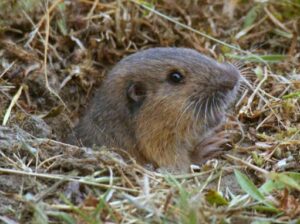

To do this, you must find an area where there has been recent activity. You can tell this is the case by seeing fresh, loose, unearthed dirt above ground. Once you’ve plotted the area, you can start probing for tunnels.
Take a stake or long object and start piercing the surface of the ground. If you feel resistance, chances are you are poking into solid earth. If you hit a soft spot or an area that seems hollow, you’ve located a tunnel. Grab a shovel or trowel and start digging. Once you’ve uncovered the shaft, it’s time to prepare the area. Clear out a section of the tunnel that is large enough to fit your trap. Be sure to remove any loose dirt from the shafts and keep the area tidy. Place your trap parallel to the existing shaft and secure the bottom area with loose soil. The key to trapping a gopher is having them think a part of their tunnel system is uncovered. You’ll want to leave a small area of the cage exposed to light. It will lure them because they will try to push dirt towards the light to fix it. When there is enough pressure on the trigger, the trap will close, securing the gopher.
Once your trap has caught a gopher, you’ll unearth it and transport it to a far-off location of your choice. Remember, this is a catch and release, so you’ll want to release the animal in an area where it can survive and not do others harm. Please remember that this is a process; setting the trap won’t always guarantee a catch. You’ll have to be patient, learn the nuances of the terrain and the best ways to set it up. As an added tip, try to integrate the trap into the soil as much as possible. For example, try not to leave exposed metal on the bottom of the cage and make sure that there is enough loose earth to fill in between the grooves. If the gopher doesn’t feel it’s natural, it won’t fall for the trap. Take your time when setting it up. If it fails, the gopher will learn from this and will be much harder to catch. When this happens, take a break from setting traps for a week. It will give the gopher time to recover, making it more susceptible to being trapped.
Lethal traps
Lethal traps come in many shapes and forms, but most will rely on the same principle as the non-lethal variant – making sure the gopher crosses its path to make a catch. You’ll want to follow the same general directions of the non-lethal trap, like finding an active tunnel and uncovering it. Once that is done, you can set your trap. A lethal trap can come in all shapes and sizes, but some common variants are shaped like a box. The box can be placed in the pathway of a tunnel and covered with dirt. Since it isn’t a wire mesh structure, it can be buried without issue. The end of the trap will have a small hole, allowing light to enter the tunnel. This factor will lure the gopher, relying on their need to fill in holes or gaps in their tunnel. Once the gopher climbs into the trap, it will set off the trigger, killing them.
One thing to note is that you will want to tie the trap down above ground. This will prevent the gopher from dragging it down its network of tunnels if it isn’t fully caught. If you live in a more rural location, tying down the trap will prevent other animals from taking the gopher and your trap. If you want to reuse the device, be sure to clean it with a solution that will rid the trap of scents and possible disease. After you’ve managed to relieve your area of gophers, you’ll want to perform some maintenance to keep new rodent residents at bay.
Prevention
One of the first things that can be done after removing your problem is finding all the holes the rodent created and filling them. By doing this, you prevent any new gophers from inhabiting the old tunnels and any other types of animals from coming as well.


Another method to keep gophers at bay is to create barriers around vegetation. Remember, gophers thrive on eating plants, roots, and anything in between, so the less accessible you make it, the fewer problems you’ll have from these kinds of rodents. If you have yet to establish the ground you will be working on; you can install wire mesh, making it more difficult for gophers to create tunnels. Although this method is quite successful in deterring rodents, it can be quite a tedious process if you’ve already established your terrain. But, as an alternative, you can still mitigate some of the problems by planting your vegetation above ground in planter beds, keeping the plants and roots safe.
With all of the above in mind, the most crucial part is to be safe. As stated before, you’ll want to read the directions for non-lethal and lethal traps. Also, be careful around rodents; wear gloves and other protective clothing to prevent yourself from getting injured. Now that you have the tools necessary to rid yourself of gophers, tackle it with confidence and good luck!
Select Your Animal



Raccoons
Raccoon Removal Information & How-To Tips



Squirrel
Squirrel Removal Information & How-To Tips



Opossum
Opossum Removal Information & How-To Tips
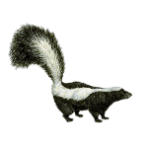


Skunks
Skunks Removal Information & How-To Tips



Rats
Rat Removal Information & How-To Tips



Mouse
Mouse Removal Information & How-To Tips
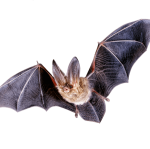


Bat
Bat Removal Information & How-To Tips



Bird
Bird Removal Information & How-To Tips



Snake
Snake Removal Information & How-To Tips



Beaver
Beaver Removal Information & How-To Tips
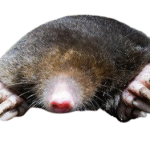


Mole
Mole Removal Information & How-To Tips



Vole
Vole Removal Information & How-To Tips



Gopher
Gopher Removal Information & How-To Tips
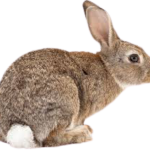


Rabbit
Rabbit Removal Information & How-To Tips



Woodchuck
Woodchuck Removal Information & How-To Tips
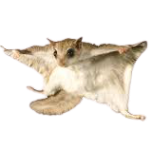


Flying Squirrel
Flying Squirrel Removal Information & How-To Tips



Chipmunk
Chipmunk Removal Information & How-To Tips
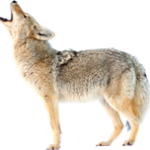


Coyote
Coyote Removal Information & How-To Tips



Fox
Fox Removal Information & How-To Tips
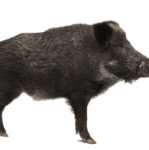


Wild Hog
Wild Hog Removal Information & How-To Tips
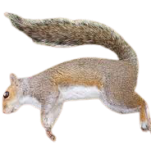


Dead Animal
Dead Animal Removal Information & How-To Tips